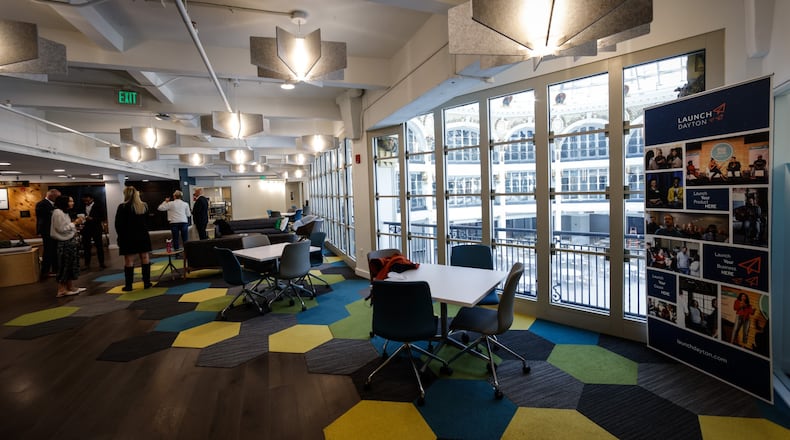The subtitle of the book is “From Rust Belt to Tech Belt.”
“Yesterday’s capitals of manufacturing ... are rebuilding from economic hardships and aging infrastructure that tore their core apart,” Fannin wrote in Silicon Heartland, adding that their “engine of growth” is “high-tech upstarts that are boosting innovation, productivity and competitiveness.”
“I do think Dayton has a very positive story to tell,” Fannin, a CNBC contributor, said in a recent interview with the Dayton Daily News.
“There’s definitely an economic recovery,” she said. “There are start-ups, many of them tied to military applications because of the Air Force Research Lab there, which is spinning out a lot of new innovations and working with local start-ups to help them get going.”
The book, published by Imagine, launched March 7. The timing was notable: The book was released several days before the Silicon Valley Bank collapse in Santa Clara, Calif. Fannin was interviewed about the book at the recent South by Southwest conference in Austin, Texas.
In Dayton, Fannin is slated to speak in a 4 p.m. to 6:30 p.m. event April 6 at the Hub at the downtown Arcade, where former Dayton Mayor Nan Whaley — a former Ohio gubernatorial candidate and now director of membership of the U.S. Conference of Mayors — will interview her.
After growing up in Lancaster, Fannin graduated from Ohio University. She wrote for publications such as Forbes and Harvard Business Review.
Fannin worked at the Journal Herald in the late 1970s. In her book, she examines how radically the Gem City has changed since then.
Thanks to a pair of visits to Dayton, she turned a light on successful Dayton entrepreneurs as well as researchers from the Air Force Research Laboratory (AFRL) at Wright-Patterson Air Force Base.
A road trip for the book’s research included not just Dayton but Indianapolis, Flint, Mich. and other cities, helping to give a “heartland overview, with a lot of case studies and profiles of entrepreneurs and leaders of the community,” Fannin said.
Her, she toured Fuyao Glass America in Moraine, interviewed Scott Koorndyk, of the Entrepreneurs Center and leaders of the Dayton Development Coalition. She spoke with Nicholas Ripplinger, founder of Battlesight Technologies, and toured local logistics complexes. She examined the Arcade’s renewal and the move of the Montgomery County fairgrounds.
“Dayton is major in the book,” Fannin said.
Resurgent Rust Belt cities have a few things in common, Fannin said. They have strong “feeders” or institutions, such as universities and hospitals.
Examples of that in the Dayton area can be found at AFRL and Wright-Patterson — whose working population has nearly doubled in just over 20 years — or the Cleveland Clinic in Cleveland.
They also are able to take advantage of state and local government funding. Silicon Valley in California, followed by New York and Boston, soak up about 75% of the venture capital funding out there, Fannin said, leaving relatively little for other cities, so government funding can be crucial.
The April 6 Arcade event is free. Registration is at onthegodayton.eventbrite.com.
About the Author



